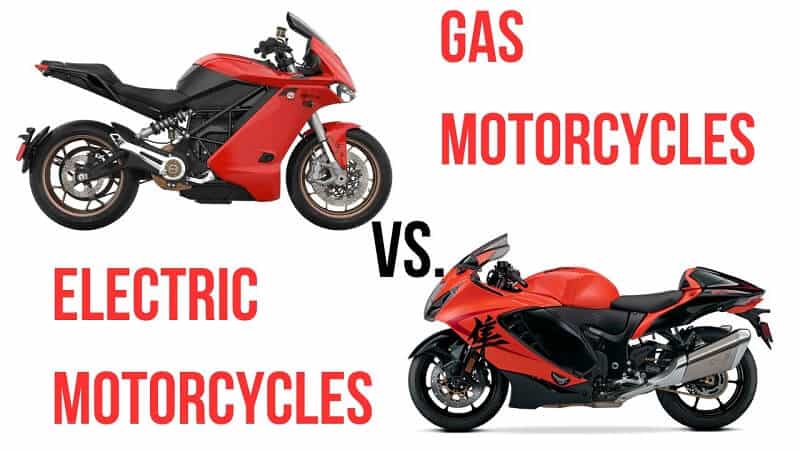The world of motorcycles is undergoing a significant transformation as electric motorcycles (e-motorcycles) gain traction alongside their traditional gas-powered counterparts. This shift has sparked numerous debates among riders and enthusiasts, as both electric and gas motorcycles have their unique advantages and drawbacks. In this in-depth exploration, we will delve into the differences between electric and gas motorcycles, considering factors such as environmental impact, range and charging, maintenance and repairs, and the overall cost of ownership. By the end of this article, you will have a comprehensive understanding of these two options and be better equipped to make an informed decision about which motorcycle type suits your preferences and needs.
Electric Motorcycles Vs. Gas Motorcycles

The most fundamental difference between electric motorcycles and gas motorcycles lies in their power source. Electric motorcycles are powered by electric motors, drawing energy from rechargeable batteries. In contrast, gas motorcycles rely on internal combustion engines that burn fossil fuels (gasoline or diesel) to generate power.
Environmental Impact
One of the most significant advantages of electric motorcycles is their environmental friendliness. They produce zero tailpipe emissions, making them a more sustainable option for eco-conscious riders. As the world grapples with climate change and air quality concerns, the adoption of electric motorcycles can play a crucial role in reducing carbon footprints and air pollution.
Gas motorcycles, on the other hand, emit greenhouse gases and other pollutants during operation. While advancements in emissions control technology have improved gas motorcycles’ environmental impact, they still contribute to air pollution and reliance on fossil fuels.
Range and Charging
Range, or how far a motorcycle can travel on a single charge or tank of fuel, is a critical consideration for riders. Electric motorcycles have made significant strides in this area, with some models now offering ranges that can compete with gas motorcycles. However, the range can vary widely among electric models, and it is heavily influenced by factors like battery capacity and riding style.
Gas motorcycles generally offer longer ranges compared to electric motorcycles, thanks to the higher energy density of gasoline. They can cover more extended distances between refueling stops, which can be advantageous for riders planning long road trips or touring.
Charging infrastructure is another aspect to consider. Gas motorcycles can be refueled at any gas station, providing convenience and accessibility. In contrast, electric motorcycle charging infrastructure is still developing, with charging stations being less widespread. This can be a limiting factor for electric motorcycle owners, especially when planning journeys in remote areas.
Maintenance and Repairs
Electric motorcycles often require less maintenance than their gas counterparts. They have fewer moving parts, eliminating the need for components like oil changes, air filters, and spark plugs. Additionally, regenerative braking systems in many electric motorcycles reduce wear on brake pads and extend their lifespan.
Gas motorcycles, on the other hand, require regular maintenance, including oil changes, filter replacements, and valve adjustments. While this maintenance is a well-established practice and essential for optimal performance, it can add to the overall cost of ownership and inconvenience for some riders.
In terms of repairs, electric motorcycles may present challenges due to their specialized components and systems. Finding qualified mechanics and sourcing replacement parts can be more difficult compared to gas motorcycles, which benefit from a well-established and extensive network of repair shops and readily available parts.
Cost of Ownership
The cost of ownership for electric and gas motorcycles involves several factors, including the initial purchase price, fuel or electricity costs, maintenance, and potential incentives or tax credits.
Electric motorcycles tend to have a higher upfront purchase price than their gas counterparts. However, they often make up for this difference in the long run due to lower operating costs. Electricity is generally cheaper than gasoline, and the reduced maintenance requirements of electric motorcycles can result in significant savings over time.
In some regions, government incentives and tax credits may further offset the initial cost of electric motorcycles, making them a financially attractive option.
Gas motorcycles, while typically more affordable upfront, have ongoing fuel and maintenance expenses that can accumulate over the years. Additionally, fluctuating fuel prices can lead to unpredictable costs for gas motorcycle owners.
Conclusion
The choice between electric and gas motorcycles is not a one-size-fits-all decision. It depends on your priorities, riding habits, and environmental considerations. Electric motorcycles offer a cleaner and more sustainable option, with lower operating costs and reduced maintenance requirements. Gas motorcycles, on the other hand, provide longer ranges and a well-established infrastructure for fueling and repairs.
Ultimately, your choice should align with your values and how you plan to use your motorcycle. If you prioritize eco-friendliness and can accommodate the limitations of charging infrastructure, electric motorcycles may be the way to go. If you value a longer range and the convenience of established refueling options, a gas motorcycle may be the better fit.
As technology continues to advance, the gap between electric and gas motorcycles is narrowing, and both options are becoming increasingly viable for riders. Whether you embrace the electric revolution or stick with the familiar roar of a gas engine, the world of motorcycling is evolving, offering something for every rider’s preference.
Ni/TP-Ai
